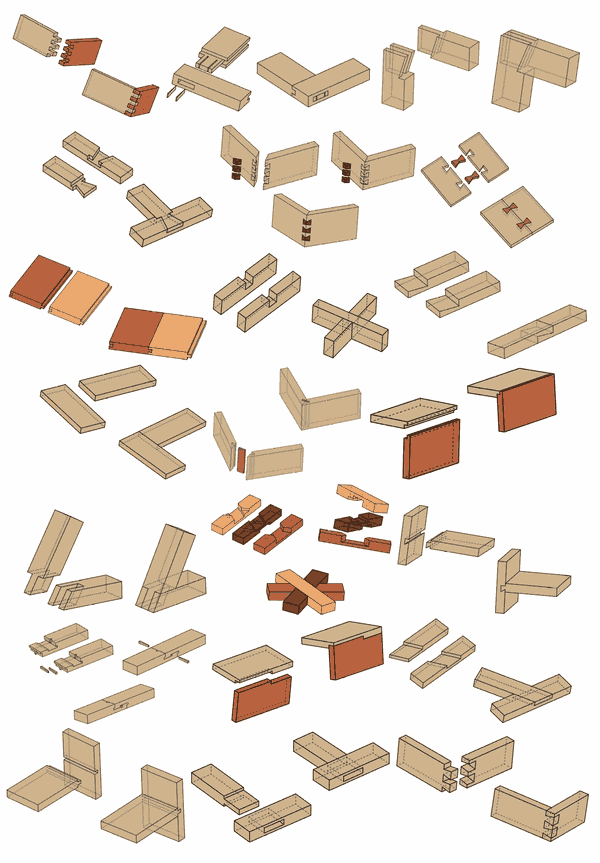Your cart is currently empty!

Carpentry Joints

Carpentry joints are an important part of woodwork. These are used for a wide range of different projects, from furniture to window frames.
They’re also an important aspect of construction, as they can make or break the look of your project. In this article we’ll take a closer look at some of the more common types of carpentry joints.
Butt Joint
The Butt Joint is one of the simplest and most common joints used in carpentry. It consists of two pieces of wood that are simply butted together to form a seam along the grain.
It is typically used to join the ends of two boards together to make a larger panel, but it can be used to connect other types of wood pieces as well.
Before you begin making a butt joint, you’ll need to measure and cut the pieces of wood correctly. This is because you’ll need to cut the board at the correct length so that the butt joint will be strong and secure.
Once you’ve figured out where to cut the board, place it on the cut line and use your saw to cut it to its desired length. Remember to keep the blade on the waste side of the line, which will help ensure that you’ll cut the board squarely.
Dado Joint
A Dado Joint is a simple woodworking technique used to create stronger joints between two pieces of wood. It can resist a greater amount of force without breaking or cracking, making it ideal for use in cabinetry and furniture-making as well as walls and ceilings.
There are a few different types of dado joints. The most common is a through dado, which cuts completely across the width of the board.
There is also a stopped dado, which cuts only across the bottom half of the board. This is useful if you want to hide the wood grain on the far end of the board.
Rabbet Joint
The Rabbet Joint is a simple and yet essential wood joint used in carpentry. It is also one of the easiest joints to make with the proper tools.
The most common form of a rabbet joint is the single rabbet joint. This type of joint is often used in door casings, window frames, bookcases and more.
Glue is often not enough to keep this joinery strong, so many people use screws and dowels to reinforce it.
A double rabbet joint is another common form of this joinery. It is similar to the single rabbet joint, but with a rabbet channel cut into both mating pieces. This makes it a stronger option for a joint because it provides extra surface area for glueing.
Pocket Joint
The Pocket Joint is one of the most popular carpentry joints for cabinet making. It is a fast, easy and strong way to join two pieces of wood together without the need for glue and complicated set up and measuring operations.
It is also very inexpensive to make. The process involves creating a hole in a workpiece at an angle, and then screwing it to another piece.
To create a pocket hole, use a special jig that guides you in drilling the holes at an angle. The jig is adjustable so that you can drill at a variety of angles.
Then, just align the workpieces and drive in pocket screws at the same angle as the holes to connect them. The screws create a solid, tight joint that is many times stronger than a nailed joint.
Biscuit Joint
The biscuit joint is a quick and easy way to join two pieces of wood together. Originally invented in Switzerland, it’s been around over 70 years.
The basic idea is that you make a slot in each piece of wood, then insert a biscuit and use glue to swell it inside the slots. This creates a tight-fitting joint that has a few advantages over other joints.
Firstly, it’s a faster joint than a dovetail. It’s also very accurate.
The key is to get an adequate amount of glue into the joint. Biscuits absorb glue, which swells them within the slot and provides some of the joint’s strength.
by
Tags: